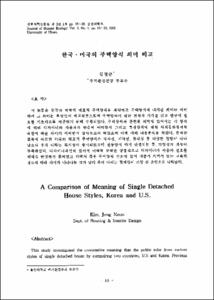흉강액 호산구 증다증의 진단적 의의
- Alternative Title
- Diagnostic Utility of Eosinophilic Pleural Effusion
- Abstract
- Eosinophilic pleural effusion(EPE) is a relatively rare phenomenon. It is defined as the presence of 10% or more eosinophils in the pleural fluid, exclusive of erythrocytes. Several reports have discussed the etiologic hetergenicity of EPE. The pathogenesis of EPE is not clear, but various etiologic factors are suggested in recent years. We decided to review our experience with EPE and to evaluate clinical utility of this phenomenon. Sixty-nine cases of eosinophilic pleural effusion(EPE) were reviewed. The etiologies of these cases were malignancy(44.9%), tuberculosis(21.7%), paragonimiasis(11.6%), pneumonia(7.2%), heart failure(5.8%) and others(8.8%). The incidence of pneumothorax in patients with EPE was 18.8% and average percentage of eosinophils(55±18%) in pleural fluid of pneumothorax group was significantly higher than non-pneumothorax group(26±17%). This finding was statistically significant(p<0.0001). The cytological and chemical findings of pleural fluid and peripheral blood finding were analyzed according to underlying disease. We noted statistically significant differencew of total protein, LD, glucose and percentage of peripheral eosinophil in paragonimiasis. We conclude that pathogenesis of EPE is still to be explored, but we might consider the possibility of associated malignancy, because the malignancy is one of the most common underlying disease in EPE, particularly in patients without evidence of pneumothorax.
Eosinophilic pleural effusion(EPE) is a relatively rare phenomenon. It is defined as the presence of 10% or more eosinophils in the pleural fluid, exclusive of erythrocytes. Several reports have discussed the etiologic hetergenicity of EPE. The pathogenesis of EPE is not clear, but various etiologic factors are suggested in recent years. We decided to review our experience with EPE and to evaluate clinical utility of this phenomenon. Sixty-nine cases of eosinophilic pleural effusion(EPE) were reviewed. The etiologies of these cases were malignancy(44.9%), tuberculosis(21.7%), paragonimiasis(11.6%), pneumonia(7.2%), heart failure(5.8%) and others(8.8%). The incidence of pneumothorax in patients with EPE was 18.8% and average percentage of eosinophils(55±18%) in pleural fluid of pneumothorax group was significantly higher than non-pneumothorax group(26±17%). This finding was statistically significant(p<0.0001). The cytological and chemical findings of pleural fluid and peripheral blood finding were analyzed according to underlying disease. We noted statistically significant differencew of total protein, LD, glucose and percentage of peripheral eosinophil in paragonimiasis. We conclude that pathogenesis of EPE is still to be explored, but we might consider the possibility of associated malignancy, because the malignancy is one of the most common underlying disease in EPE, particularly in patients without evidence of pneumothorax.
- Issued Date
- 1992
- Type
- Research Laboratory
- Alternative Author(s)
- Choi, Youn Mi; Chi, Hyun Sook
- Publisher
- 울산의대학술지
- Language
- kor
- Rights
- 울산대학교 저작물은 저작권에 의해 보호받습니다.
- Citation Volume
- 1
- Citation Number
- 1
- Citation Start Page
- 58
- Citation End Page
- 63
- Appears in Collections:
- Research Laboratory > The ULSAN university medical journal
- 파일 목록
-
-
Download
 000002025010.pdf
기타 데이터 / 1.39 MB / Adobe PDF
000002025010.pdf
기타 데이터 / 1.39 MB / Adobe PDF
-
Items in Repository are protected by copyright, with all rights reserved, unless otherwise indicated.